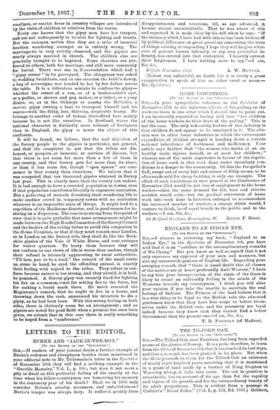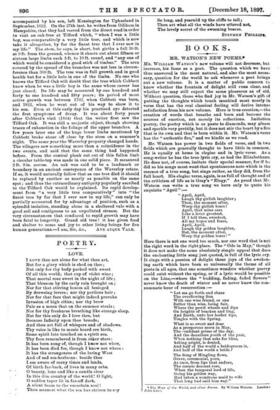THE T1LFORD OAK.
[To THE EDITOR OF THE "SPECTATOR:9 Sir.,—The Tilford Oak, near Farnham, has long been regarded as one of the glories of Surrey. It is a pain, therefore, to learn from the Globe of December 9th that it has reached its last days, and that a new oak has been planted in its place. But when the Globe proceeds to claim for the Tilford Oak an existence of nearly eight hundred years, asserting that it is mentioned. in a grant of land made by a brother of King Stephen to Waver ley Abbey, it falls into error. The oak in question is remarkable, less on account of its age than for the rapidity and vigour of its growth and for the extraordinary beauty of its adult proportions. This is evident from a passage in Cobbett's "Rural Rides." (Vol. I., p. 123, Ed. 1885.) Cobbetts accompanied by his son, left Kensington for Uphusland in September, 1822. On the 27th inst. he writes from Odiham in Hampshire, that they had veered from the direct road in order to visit an oak-tree at Tilford which, "when I was a little boy, was comparatively a very little tree, and which is now take it altogether, by far the finest tree that I ever saw in my life." The stem, he says, is short, but girths a full 30 ft. at 9 ft. from the ground, whence it shoots out about fifteen or sixteen large limbs each 5 ft. to 10 ft. round, and "any one of which would be considered a good stick of timber." The area covered by the spread of the branches was not less in circum- ference than 300 ft. The tree was in full growth and in good health but for a little hole in one of the limbs. No one who knows the Tilford Oak will doubt that the tree which Cobbett knew when he was a little boy is the same whose career has just closed. Its life may be measured by one hundred and forty to one hundred and fifty years ; its period of most active growth was between 1762, when Cobbett was born, and 1822, when he went out of his way to show it to his son. Even at this early day his practised eye detected the first symptoms of decay. It was about forty years after Cobbett's visit (1864) that the writer first saw the Tilford Oak. It was still a majestic object, though showing traces of exhaustion in the foliage of the upper branches. A few years later one of the huge lower limbs mentioned by Cobbett broke sheer off close by the stem on a summer's night. The same year the Waverley property changed hands. The villagers saw something more than a coincidence in the two events, and said that the same thing had happened before. From the central plank cut out of this fallen limb a circular table-top was made in one solid piece. It measured 2 ft. 9 in. across. An oak was said to be a landmark or boundary in an ancient conveyance of the Waverley estate. If so, it would naturally follow that as one tree died it should be replaced by another as nearly as possible on the same spot; and thus the extraordinary antiquity popularly ascribed to the Tilford Oak would be explained. Its rapid develop- ment from "a very little tree comparatively" into "the finest tree by far that I ever saw in my life," can only be partially accounted for by advantage of position, such as a splendid isolation, standing alone in a sheltered vale with a good soil and contiguous to an unpolluted stream. But the very circumstances that conduced to rapid growth may have been fatal to longevity. Grand old tree ! it has given food and shelter to some and joy to other living beings for five human generations.—I am, Sir, &c., AVE ATQIIE VALE.







































 Previous page
Previous page